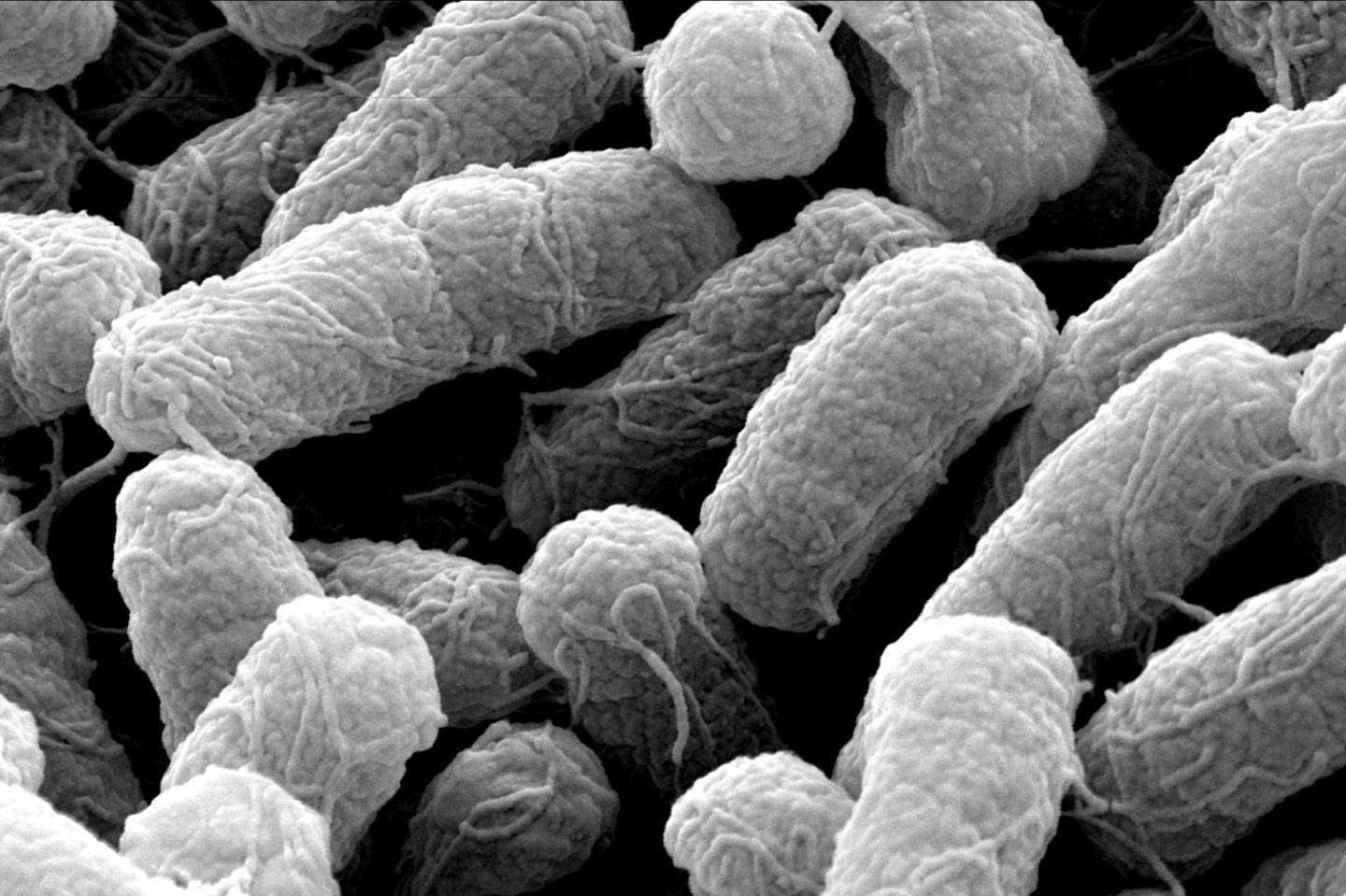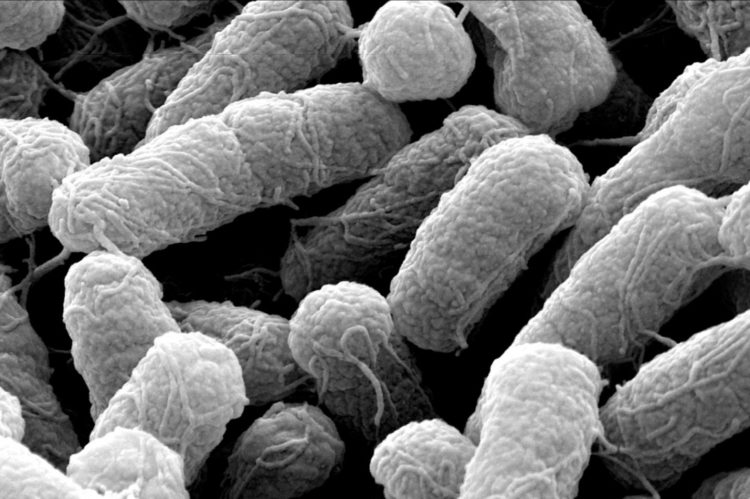Scientists will present new research on antibiotic resistance, drug discovery, and the flu at the APS March Meeting in Denver

Credit: DI Andersson laboratory, Uppsala, Sweden
DENVER, COLO., FEBRUARY 28, 2020 — A new influenza strain appears each flu season, rendering past vaccines ineffective. Antibiotic resistant ‘superbugs’ quickly develop genetic resistance to existing drugs. Rapidly changing viruses and bacteria complicate vaccine and drug research. Scientists at the 2020 American Physical Society March Meeting in Denver will share their work on the emergence and evolution of modern pathogens.
Predicting Resistance
Antibiotic resistance is an increasingly serious threat to modern medicine. Resistance generally arises from evolutionary processes, when bacteria change their genetic make-up by mutation or uptake of resistance genes from other bacteria and become less susceptible to drugs. While high doses of antibiotics can clearly select for resistant bacteria, it remains unclear by which mechanisms and rates low doses can cause bacteria to become resistant. A team of researchers from the University of Cologne and University of Uppsala has now developed a new quantitative model to predict how Escherichia coli evolve mutational resistance to different levels of the antibiotic streptomycin.
“We show that growth rates of a class of resistance mutants can be predicted from the way mutations affect cell metabolism”, said Fernanda Pinheiro, a physicist at the University of Cologne and shared first author of the study together with Omar Warsi, a microbiologist at Uppsala University.
Concepts and methods for predictive analysis established in this work might inform the least-resistance prone treatment protocols, drug targets, and new antibiotic candidates, finding potential applications in medicine, drug development and public health.
Toward a Universal Flu Vaccine
The influenza virus mutates so quickly that it requires a new vaccine against it every year.
However, Assaf Amitai and his colleagues, Maya Sangesland, Daniel Lingwood, and Arup
Chakraborty, report on the mechanisms that may allow the immune system to respond to a
broad distribution of flu strains. The approach that they have explored uses nanoparticles with specific geometries and compositions.
“We are not trying to just increase overall protection against the flu, but also to make the
immune system do something it does not naturally do,” said Amitai, a theoretical biophysicist at
the Massachusetts Institute of Technology.
Immune cells typically attack the head of hemagglutinin, the flu surface protein. Hemagglutinin’s head mutates very frequently, while its stem does not. The researchers have studied how the use of multiple sequentially administered nanoparticle-based vaccines with specific geometries and compositions may be able to train the immune system to respond to hemagglutinin’s stem instead of its head. The results provide a mechanistic understanding of the underlying immunological processes.
Streamlining Drug Discovery
Certain species of harmful bacteria, like Clostridium difficile, have already evolved resistance to most existing therapeutics, and the lengthy process of creating new drugs makes it difficult to develop timely specialized treatments. But Anushree Chatterjee and her team have created a new platform and approach for combating antibiotic resistance. The new method can accelerate the development of therapeutics, according to Chatterjee, a bioengineer at the University of Colorado, Boulder.
The researchers developed a new, interdisciplinary technique, called the Facile-Accelerated Specific Therapeutic (FAST) platform, that can produce tailored therapeutic molecules for each pathogen. Combining bioinformatics, synthetic biology and chemistry, and nanotechnology, the platform can develop medical therapies within a week from discovery to testing in the lab.
Antibiotics and the Gut
Gut bacteria perform many helpful functions, but still feel the impact of antibiotics–no matter the dose.
“Even weak doses of antibiotics can have a surprisingly strong impact on the microbiome,” said Raghuveer Parthasarathy, a physicist at the University of Oregon. He and his colleagues analyzed how sublethal doses of antibiotics changed the behavior of gut bacteria in zebrafish.
The team found that weak doses alter the shape of lone bacteria and the growth of bacterial clusters in such a way that they struggle to remain in the gut. Taking sublethal doses of antibiotics can lead to the gut purging antibiotic-exposed bacteria, sending them out into the environment.
###
Predicting Antibiotic Resistance Evolution
TIME/DATE/PLACE: 5:18 PM-5:30 PM, Thursday, March 5, 2020, Room: 404
CONTACT: Fernanda Pinheiro, [email protected]
Influenza Virus Geometry Shapes the Immune Response against It
TIME/DATE/PLACE: 4:30 PM-4:42 PM, Wednesday, March 4, 2020, Room: 403
CONTACT: Assaf Amitai, [email protected]
FAST, Smart Therapeutics
TIME/DATE/PLACE: 3:54 PM-4:30 PM, Thursday, March 5, 2020, Room: 403
CONTACT: Anushree Chatterjee, [email protected]
Biophysical Consequences of Sublethal Antibiotics on Gut Bacterial Persistence and Transmission
TIME/DATE/PLACE: 9:00 AM-9:12 AM, Tuesday, March 3, 2020, Room: 304
CONTACT: Raghuveer Parthasarathy, [email protected]
ABOUT THE MEETING
The American Physical Society (APS) March Meeting is a major international conference and the largest physics meeting of the year. In 2020, the APS March Meeting will convene from March 2-6 at the Colorado Convention Center in downtown Denver.
Useful Links
Meeting website: https:/
Scientific program: http://meetings.aps.org/Meeting/MAR20/APS_epitome
Press services: https:/
Hotel & Travel information: https:/
Press Registration
Complimentary registration is available to journalists for the express purpose of gathering and reporting news and information from the meeting. Staff reporters, freelance writers, and students are welcome to apply. Press credentials may be obtained by completing the form on this page: https:/
Press Conferences
All press conferences will take place in Room 608. If you are unable to attend, you may register to watch and ask questions online at https://webcast.apswebcasting.com/webcast/registration/a65e0a8e-38c6-4ccd-8eea-98696d213857
Press Room
A press room for registered journalists will operate throughout the meeting in Room 610/612 and will offer complimentary coffee, breakfast, and lunch. The press room may be reserved for conducting interviews.
Hours
Monday – Thursday, 7:30 a.m. – 6:00 p.m.
Friday, 7:30 a.m. – 2:45 p.m.
Please contact the APS Press Office with any questions at [email protected].
ABOUT APS
The American Physical Society is a nonprofit membership organization working to advance and diffuse the knowledge of physics through its outstanding research journals, scientific meetings, and education, outreach, advocacy, and international activities. APS represents over 55,000 members, including physicists in academia, national laboratories, and industry in the United States and throughout the world. Society offices are located in College Park, Maryland (Headquarters), Ridge, New York, and Washington, D.C.
Media Contact
APS Press Office
[email protected]
301-209-3090





